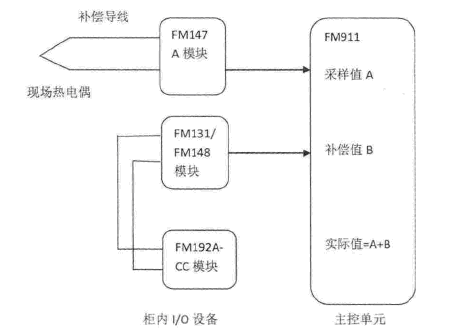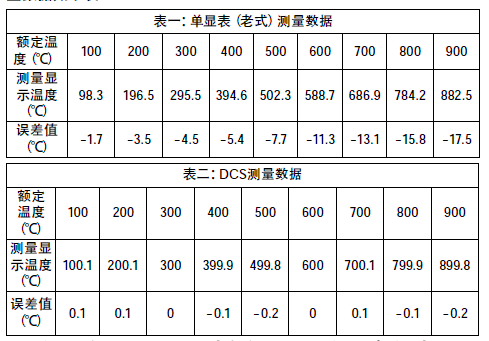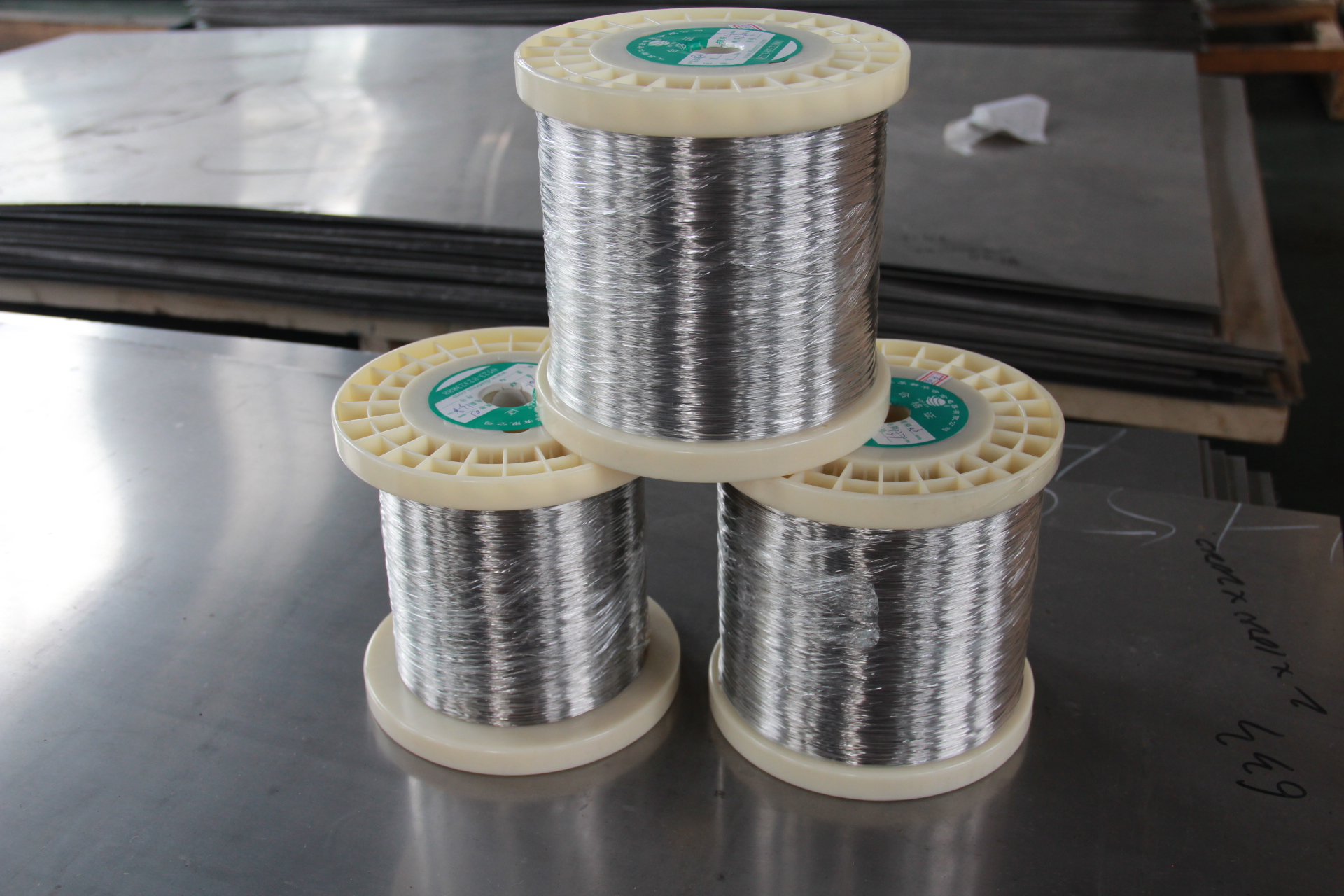The thermocouple temperature measurement technique in the Distributed Control System (DCS) has been widely used. In our modern enterprise, DCS has been widely promoted, and various types of input, output, and control systems have been widely used. Among them, the development of thermocouple temperature measurement technology has been greatly developed. progress. Therefore, the requirements of thermocouple temperature measurement technology are getting higher and higher, and the accuracy of its temperature measurement is also higher. Therefore, cold junction temperature compensation in thermocouple temperature measurement is a heavy factor that affects the accuracy of temperature measurement.
ã€introduction】
In modern enterprise production, thermocouples are widely used to measure temperature in the range of -200-1300°C. In our power plant boilers are also used for temperature measurement. Before the renovation, we directly connected the thermocouple measurement signal to the single-display meter. The temperature compensation is artificially set. Therefore, the measured data is not accurate and does not truly reflect the operating status of the boiler. .
After the DCS transformation of our plant's control system in 2011-2012, we had a more advanced control system and made great progress in the thermocouple temperature measurement technology. With a more accurate measurement of cold junction compensation technology. For the normal operation of the boiler provides a reliable guarantee. Here we briefly analyze the use of thermocouple temperature measurement technology before and after DCS reconstruction.
First, the situation before the transformation
The temperature of the bed temperature and other burning areas of the two boilers in the former Dudu Power Plant was reconstructed. The K-index thermocouple was used to measure the temperature. The measurement signal was displayed by the compensation line close to the single display, and the cold junction temperature compensation was considered to be set. The principle is shown in the figure

The temperature measurement method still has some deficiencies in the process of operation:
(1) A large amount of consumables requires a set of meters for each measurement point.
(2) Large measurement error.
(3) Single-display meter Although the technology is mature but not advanced, the failure rate is high and the maintenance volume is large.
(4) It is inconvenient to use, if need to add a large number of cables and meters in the display.
(5) The obsolete measurement display method occupies a large area of ​​the screen cabinet. When the measurement point is large, the operator's supervision panel cannot be seen.
For this reason, the elimination of the old measurement display methods for DCS reconstruction and the introduction of new technologies are a major innovation for our power plant.
Second, the transformation program introduced
In 2011, our plant began to transform the #2 unit from the old old relay control system to the existing advanced DCS distributed control system. After that, the 1# unit was also transformed in 2012. Get better results.
1, the choice of DCS system
Based on the advantages of the entire control system (boiler, turbine, electrical) and price of our power plant and the advantages of the DCS system, Hollysys’ MACSV system was selected. Hollister's MACSV system has the following features:
â— Provide integrated management and control solutions on a unified system platform
â— Standard Client/Server Structure
â— Advanced fieldbus technology
â— Support OPC data processing
â— Open network system, operating system and hardware structure system
â— Standard configuration software functions
â— The control system provides convenient system simulation, non-intrusive download and data readback
â— The system is easy to install and the system's redundancy ensures the high reliability of the system
â— The system has large processing, fault monitoring and transfer capabilities
2, MACSV system thermocouple temperature measurement principle
Holco's MACSV system is equipped with a dedicated thermocouple cold junction compensation module FM192A-CC in each control station. This module directly measures the analog voltage signal generated by the ambient temperature in the control cabinet, the measured temperature T and the resulting simulation. The voltage signal V has a linear relationship: T=100*V, which is connected to the module FM141, converts the voltage signal into a data point in the database, and serves as a cold junction temperature compensation for the thermocouple analog input module. In the field, the thermocouple temperature measurement point adopts the feed-forward type, the compensation wire directly enters the input module end of the control station, and the cold junction of the field thermocouple element is extended to the station. The FM192-CC module in the station is used for cold junction compensation.
3, the choice of thermocouple temperature measuring element (module)
In the case of Holmes' MACSV system, we chose the FM147A module for the thermocouple temperature measurement element. Because FM147A has the following characteristics:
â— The FM147A module has a small size, light weight, and flexible installation.
â— The FM147A module has a hot swap function. This module can be plugged and unplugged when the system is powered on. It will not affect the normal operation of the module and the system.
â— The FM147A module can periodically detect the status of the CPU and the short-term condition of the thermocouple. The watchdog timer circuit can be automatically reset in the event of a module abnormality.
â— FM147A module provides 24V power reverse protection, communication line pressure protection, signal input channel protection.
â— The FM147A module supports on-site thermocouple signals for parallel input of this module and related temperature measuring instruments.
â— The FM147A module handles thermocouple signals from -5mV to +75mV and linear millivolt signals from 0mV to +78.125mV.
4, FM147A module introduction
The FM147A module is an intelligent 8-channel thermocouple analog input module. It is an industrial field-level thermocouple analog input module newly developed by Hollysys using the world's most advanced fieldbus technology. Connected to the companion FM131A pedestal to handle millivolt and millivolt input signals from an on-site thermocouple. The FM147A module is an intelligent fieldbus product and is a type of I/O unit for Holtek's FM series hardware systems.
5, FM147A module principle explanation
The FM147A module is connected to the companion FM131A base, and then 8 field signals are introduced through the 40 terminals of the base, and the 8-channel input TC analog board is accessed through the 64-pin connector. After the input thermocouple signal is filtered, the voltage is converted into the A/D conversion circuit. The converted signal passes through the channel switching and enters the intelligent processing board. The intelligent processing board calculates the value of the input signal based on this signal, and then passes the DP bus to the DP master station.
The schematic diagram is as follows:
6, field wiring
Examples of applications at the site are as follows:
7, cold end temperature compensation
The use of thermocouple signals necessarily involves temperature compensation. The DCS system temperature compensation method was used in this reconstruction. He used the signal generated by FM192A-CC as the compensation temperature signal.
The advantages of this method are:
â— Can make full use of the existing functions of the system to improve system utilization.
â— Reduce the total number of compensation points and reduce the workload of installation, commissioning and maintenance of temperature measurement components at the industrial site.
â— The compensation temperature setting and modification are flexible
â— High accuracy of temperature compensation
The principle of compensation is as follows:

Three, thermocouple temperature measurement of the original single-table measurement and DCS transform the measurement results
In order to summarize whether the DCS retrofit thermocouple measurement temperature has achieved the desired effect, we have done a simple experiment to compare this: The experimental method is to use a thermostat (major) to heat a thermocouple to display its measurement in two ways The temperature values ​​are compared and judged, and the measurement data are as follows:

Obviously from Table 1 and Table 2, it can be seen that the error value measured by the old single-table metering method is larger, while the DCS-reconstructed measurement data has less error, which can prove the DCS measurement temperature with cold junction compensation. The accuracy is quite high and the transformation has achieved good results.
Fourth, the conclusion
For this DCS reconstruction, good results have been achieved, and the entire control system (boiler, turbine, and electrical) has been successfully transformed.
For the thermocouple temperature measurement technology I analyzed, it is also quite perfect, because in the boiler operating temperature monitoring point is the use of thermocouple temperature measurement to monitor the over-the-road operating conditions, in the DCS transformation under such successful conditions our The safe operation of the boiler provides a guarantee, because this system can accurately measure the internal operating temperature of the boiler, allowing operators to more clearly understand the operating conditions of the boiler, and can be timely and accurately based on the unstable operation. Parameters to determine, timely adjustment of the boiler's operation. Ensure safe operation of boilers.
Resistance Electrothermal Alloy
High resistance alloy is used to produce resistance elementof conductive material.Requirements including High mechanical strength, good corrosion resistance and oxidation resistance. Working temperature is usually at500 ℃. Commonly used with constantan chromium iron, iron chromium aluminum, nickel chromium, nickel, resistivity rho (20 ℃) is 1 Ω was/m or so. It is not used in the conduction of current, but with its high resistance to limit or control the current in the circuit, such as motor, potentiometer, standard resistors, potentiometers, slip line resistor resistance element and resistance line, etc.; For the using of high resistance in the pressure sensor,Temperature compensator and temperature measuring resistor of resistance element to creatte reflect strain, temperature, magnetic field and parameters; High resistance alloy can also be used as heating elements in the manufacture of the resistance heating equipment, could be applied in current, voltage regulating and the winding of control components.
Resistance Alloy,Corrosion Resistant Alloy,Resistance Electrothermal Alloy,Fecral Resistance Heating Alloys
Jiangsu nickel alloy Co.,Ltd , https://www.xhalloy.com